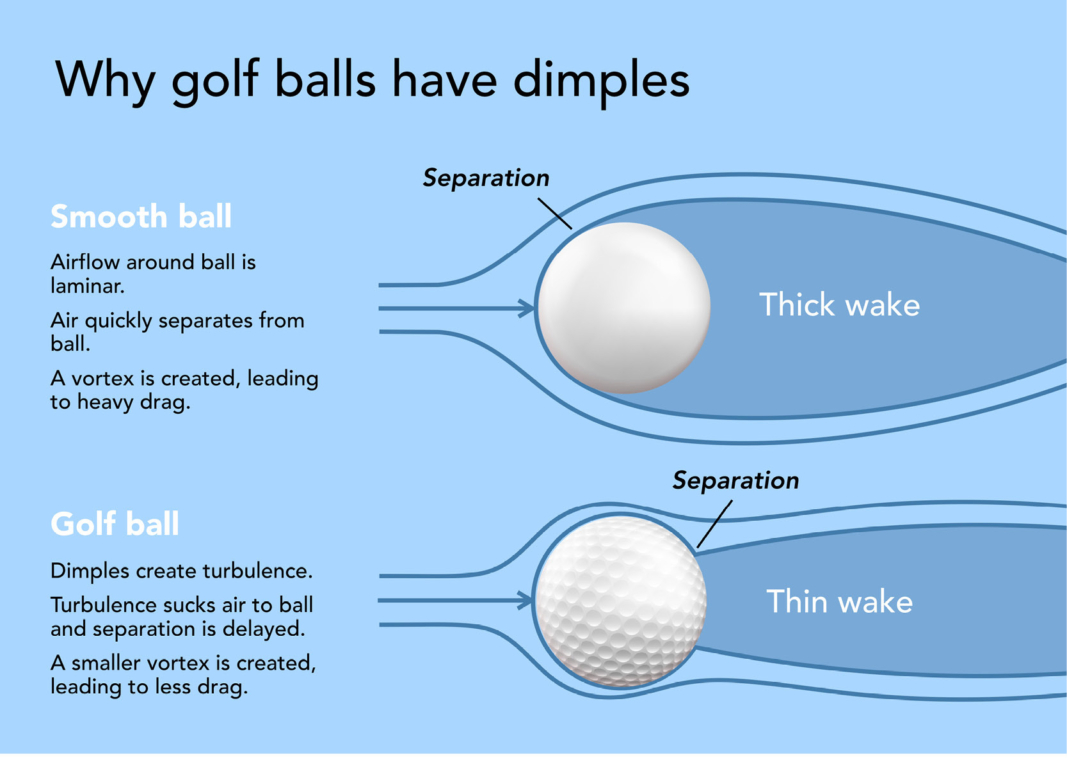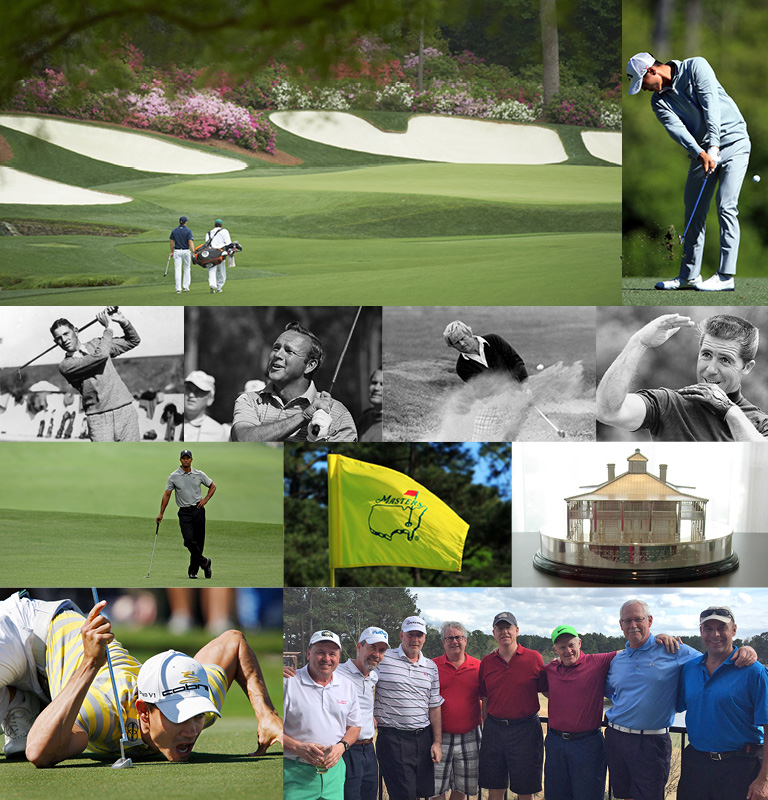That One’s Not Coming Back

Golf…what a game! :))))
As you may well know by now, one of my “non-work” passions is playing golf. Now, you’d think a guy who enjoys solving your PIA (Pain In The @#$) Jobs! would be better at figuring this sport out, but I must admit, not so much. If you’ve ever played, you know the thrill of hitting it “on the face” and sending it right where you intended it to go, and other times where you are just flummoxed, wondering “now where did that come from” as it heads off into the woods or nose dives into the water. I am pleased to share that I got an “unconventional” hole in one not long ago – but for the record books (and my good friend who reminds me often), it was after I put the first shot into the woods. I asked my group if I could “try it again”, and sure enough, it went into the hole (officially for a par). Recently I was at the sporting goods store and saw the “wall” of golf ball choices – low compression, high spin, big dimples, different colors – so many brands and choices. I searched for “won’t go in the water” balls and “hates being in the woods alone balls”, but to no avail. I did however do some research on ball technology and manufacturing I think you’ll find enjoyable, along with a few trivia facts. And for those who also find their balls “not cooperating” and come across a “KHT” ball deep in the woods, be sure to send it my way. Enjoy, and thanks to NASA, Google, Wikipedia, golftipz.com and youtube.com for the info.
- The first recorded golf balls were made in Scotland in the 1400’s from wood, specifically beech or boxwood. They were often smoothed and painted but were very inconsistent.
- The feathery ball, used in the 17th and 18th centuries, was made from leather and stuffed with feathers. It was labor-intensive to produce and quite expensive, but outperformed the woodies.
- Gutta-percha, a type of rubber derived from the sap of the Gutta tree, was used to make golf balls in the mid-19th century. Gutta-percha balls were hand-formed, and the material offered better durability and performance than featheries. See how here
- The flight of a golf ball is a complex interplay of various scientific principles and factors. From the moment the ball is struck by the clubface to its eventual landing, several physical forces come into play, shaping its trajectory and distance.
- One of the fundamental principles that governs the flight of a golf ball is aerodynamics. As the ball travels through the air, it encounters air resistance, commonly referred to as drag. The drag force acts opposite to the direction of the ball’s motion, slowing it down. The dimples on the surface of a golf ball play a crucial role in reducing drag and optimizing its flight, creating turbulence in the boundary layer of air around the ball, allowing it to effectively “ride” on a cushion of air, reducing drag and increasing lift.
- Lift force is another critical factor in golf ball flight. It is the upward force generated by the pressure differential between the top and bottom surfaces of the ball. The phenomenon is explained by Bernoulli’s principle
- The interaction between the clubface and the ball at impact also affects the ball’s flight (this is where my problem lies). The launch angle, the angle at which the ball leaves the clubface, determines the initial trajectory. A steeper launch angle creates a higher ball flight, while a shallower angle produces a lower trajectory
- Spin plays a vital role in golf ball flight characteristics. Backspin creates lift and allows the ball to maintain a stable flight path. It also helps the ball stop quickly on the greens. On the other hand, sidespin can cause the ball to curve in the air, resulting in hooks or slices (another one of my issues – as sometimes there is simply “Kowalski” spin which provides a good laugh to the other folks playing!)
- The first mass-produced rubber golf ball, the Haskell ball, was introduced in the late 19th century. It featured a solid rubber core wrapped in gutta-percha threads. This design provided greater distance and revolutionized the game. Coburn Haskell was a Cleveland guy!
- Dimples on golf balls play a crucial role in their performance. The concept of dimples was first introduced in the early 20th century, and they help reduce drag and increase lift, allowing the ball to travel farther.

Golf Ball Manufacturing – Check out these incredible YouTube videos of the process! HERE AND HERE
For my engineering buddies here are some interesting facts:
- The number of dimples on a golf ball can vary, but the average is around 300-500 designed to optimize lift, drag, and stability in flight.
- The maximum weight of a golf ball is 1.620 ounces (45.93 grams), and its maximum diameter is 1.680 inches (42.67 mm), according to the rules of golf.
- Golf balls can reach impressive speeds during play. Professional golfers can consistently hit drives that exceed 350 yards with ball speeds approaching 180 miles per hour.
- The longest hit golf ball by a male in a professional competition was achieved by Mike Austin in 1974. Austin hit a drive that traveled a remarkable 515 yards during the U.S. National Seniors Open Championship in Las Vegas.
- The longest recorded drive by a professional female golfer in a competition is 406 yards. This remarkable achievement was accomplished by Phillis Meti of New Zealand during the World Long Drive Championship in 2017.
- The record for the most holes-in-one by a professional golfer is held by Mancil Davis. Davis achieved a total of 51 holes-in-one during his professional career. His impressive feat spanned from 1962 to 1979 and included holes-in-one in various tournaments and exhibition matches. (the most holes in one after a second shot are unknown, but I’m proud to be in this club!!)
~1.2 billion golf balls are made each year! One of the best, Titleist video here
::::::::::::::::::::::::::::::::::::::::::::::::::::::::::::::::::::::::::::::::::::::::::
DO YOU LIKE CONTESTS?
Me, too.
As you may know the Kowalski Heat Treating logo finds its way
into the visuals of my Friday posts.
I. Love. My. Logo.
One week there could be three logos.
The next week there could be 15 logos.
And sometimes the logo is very small or just a partial logo showing.
But there are always logos in some of the pictures.
So, I challenge you, my beloved readers, to count them and send me a
quick email with the total number of logos in the Friday post.
On the following Tuesday I’ll pick a winner from the correct answers
and send that lucky person some great KHT swag.
So, start counting and good luck!
Oh, and the logos at the very top header don’t count.
Got it? Good. :-))))
Have fun!!
::::::::::::::::::::::::::::::::::::::::::::::::::::::::::::::::::::::::::::::::::::::::::






